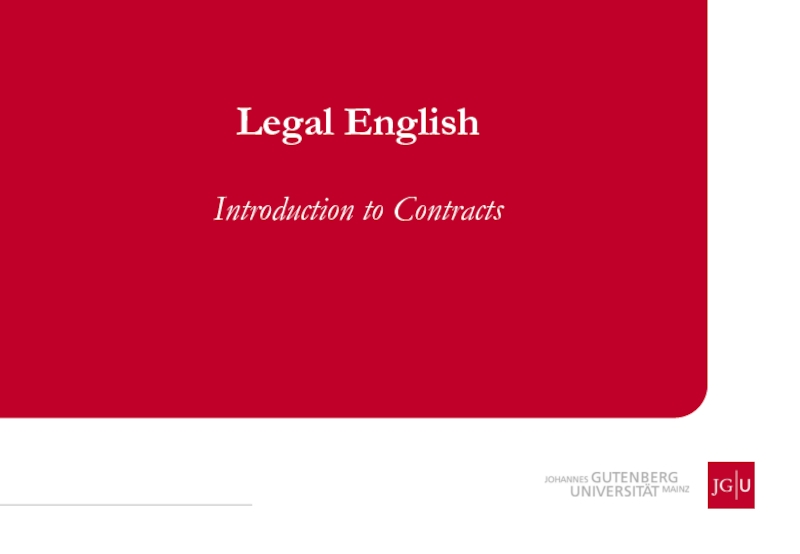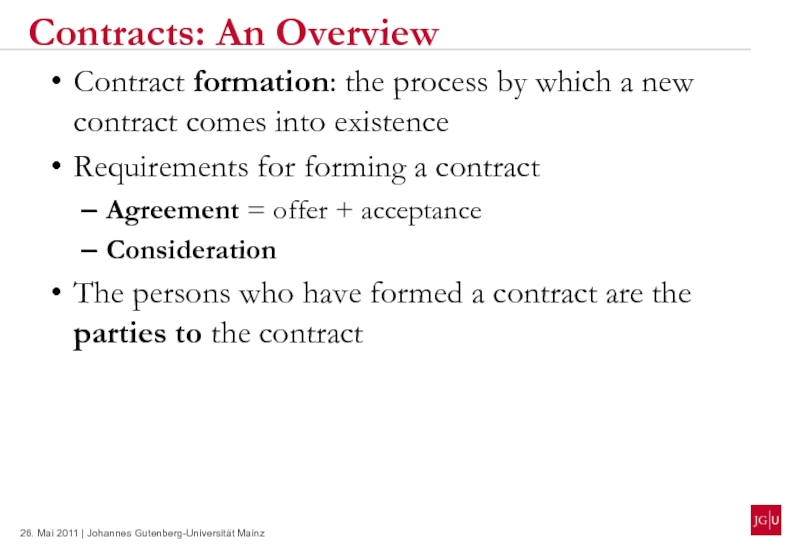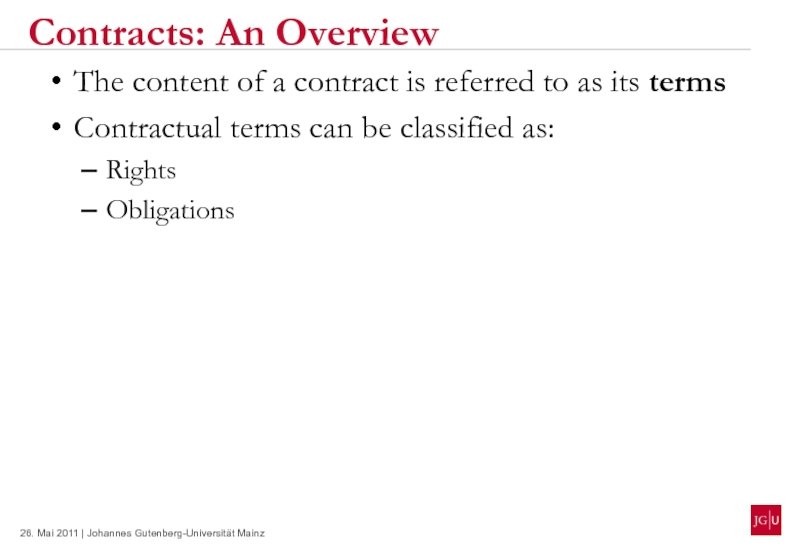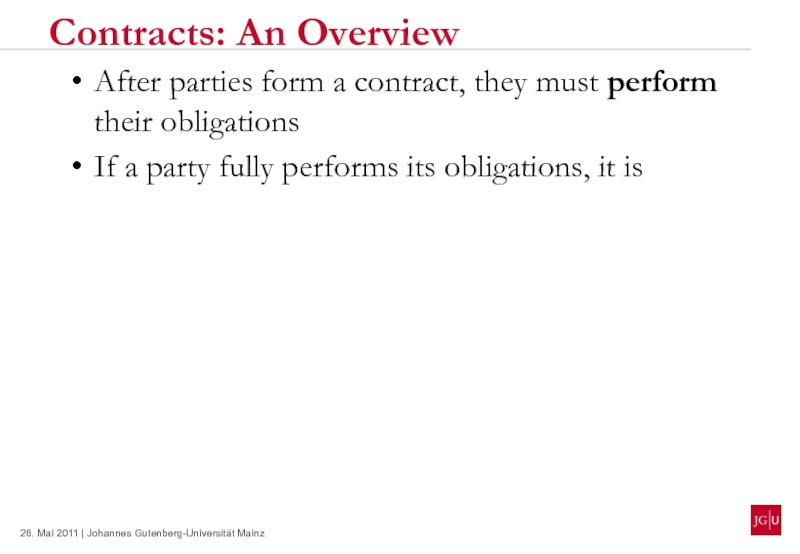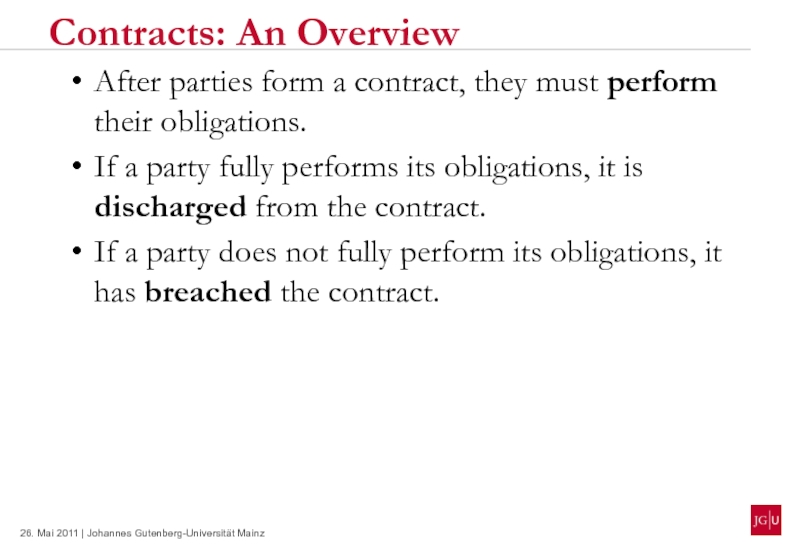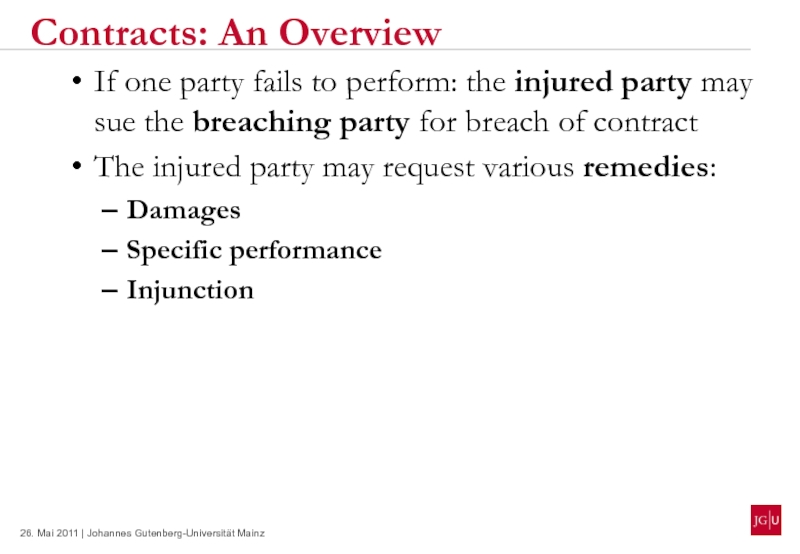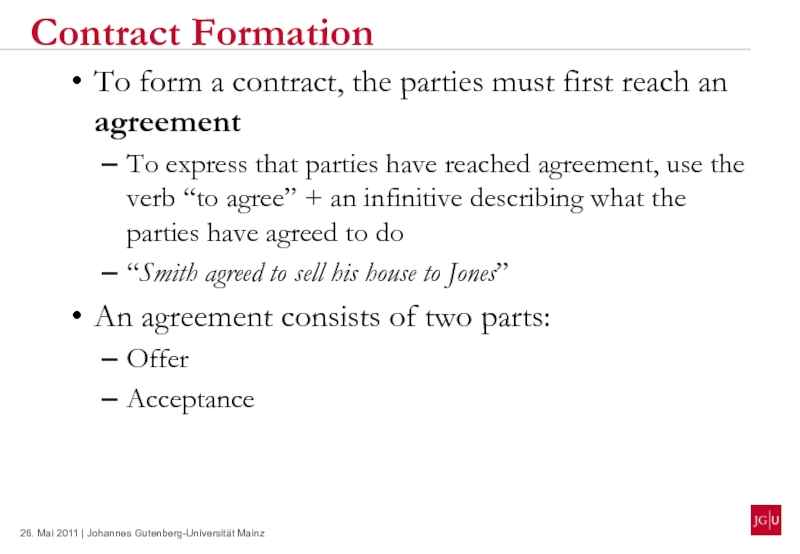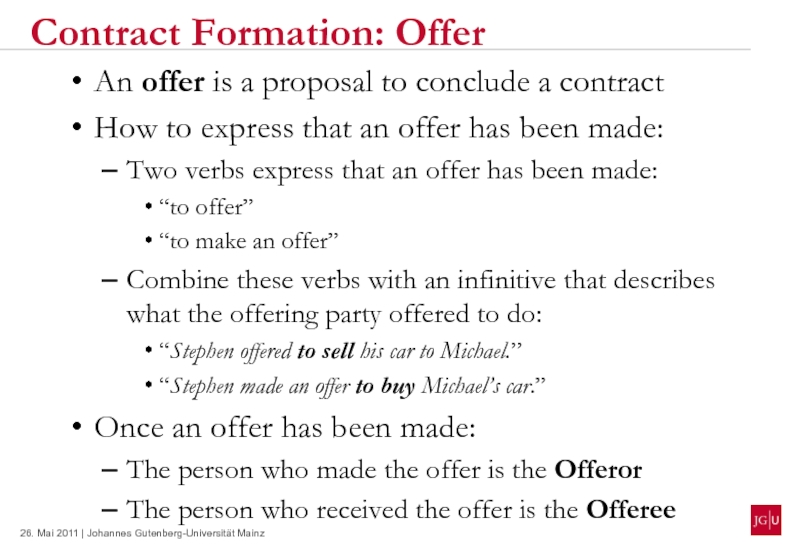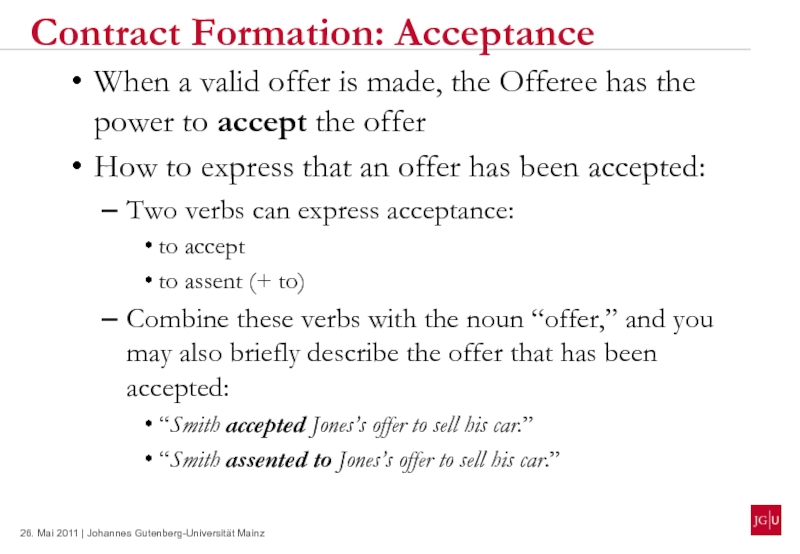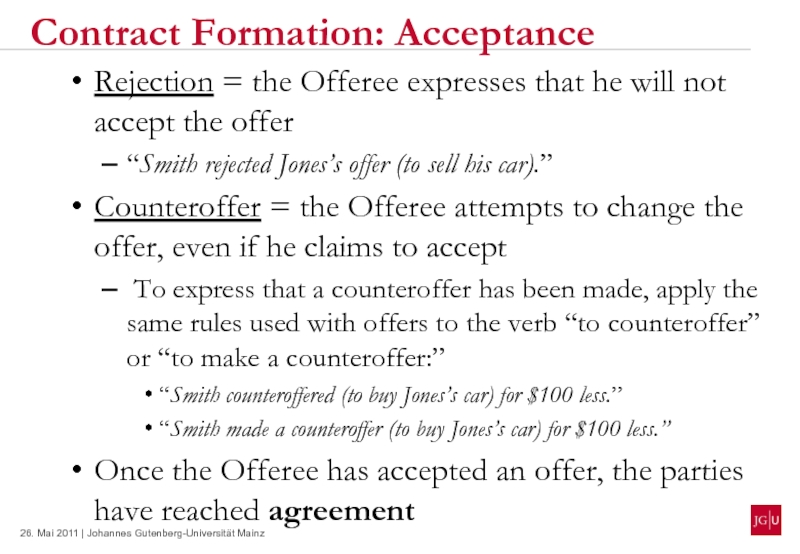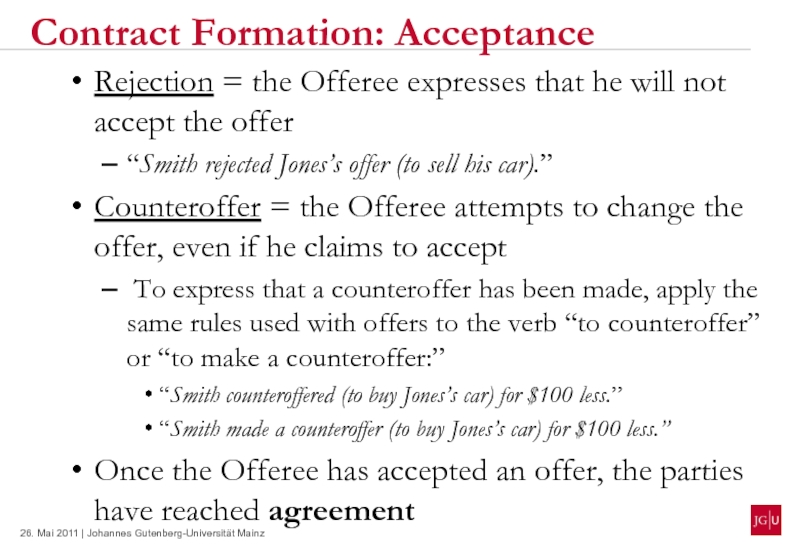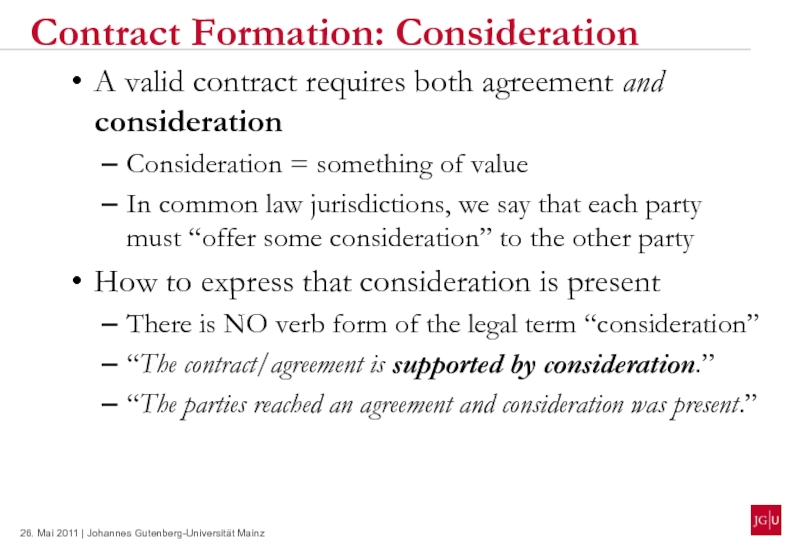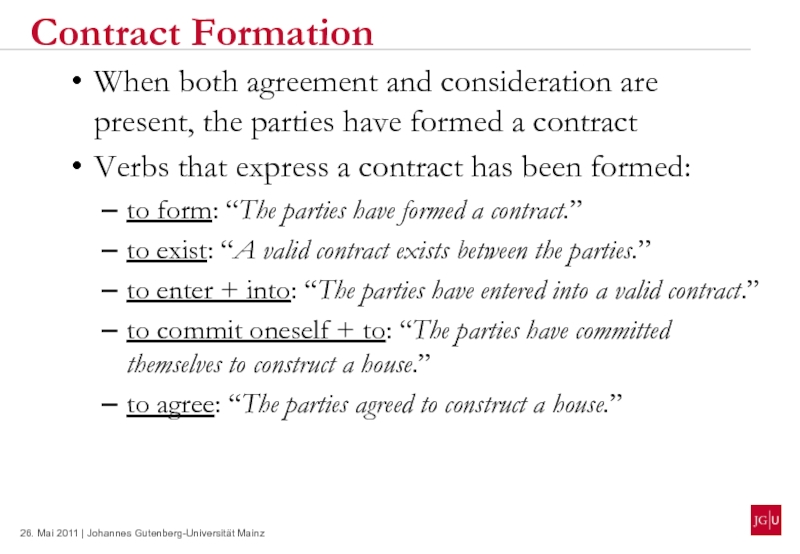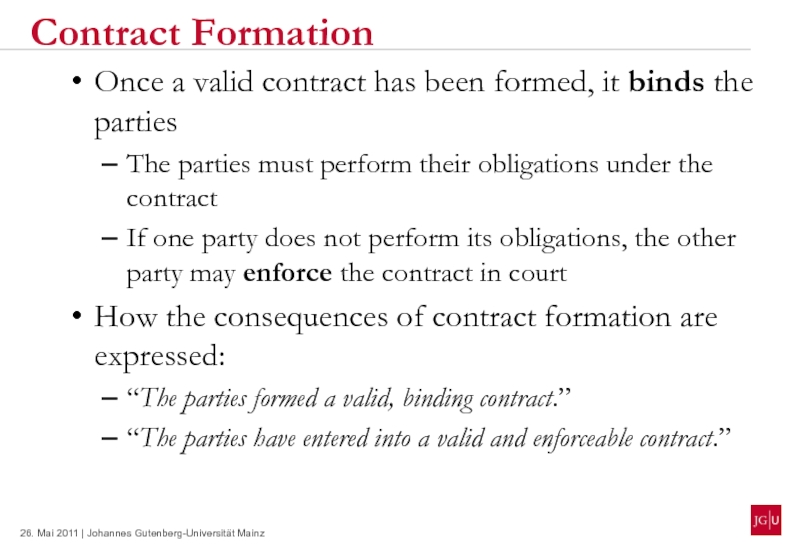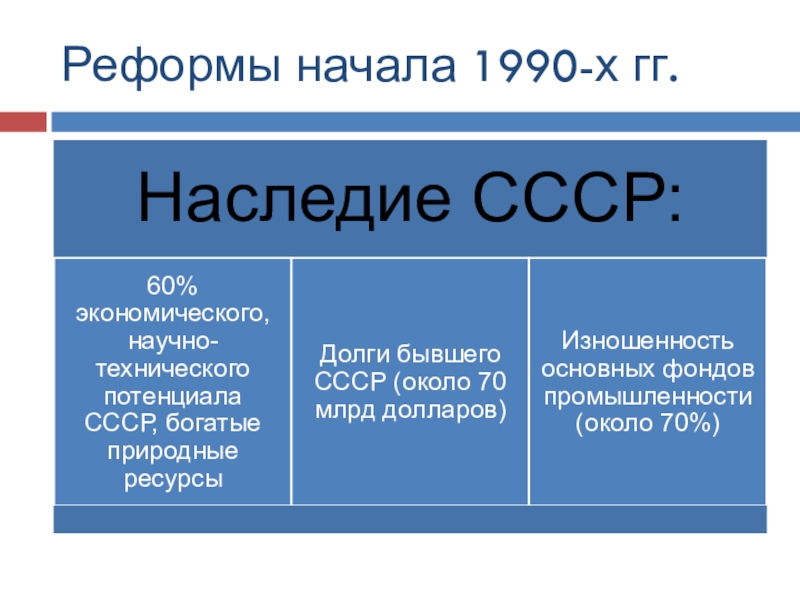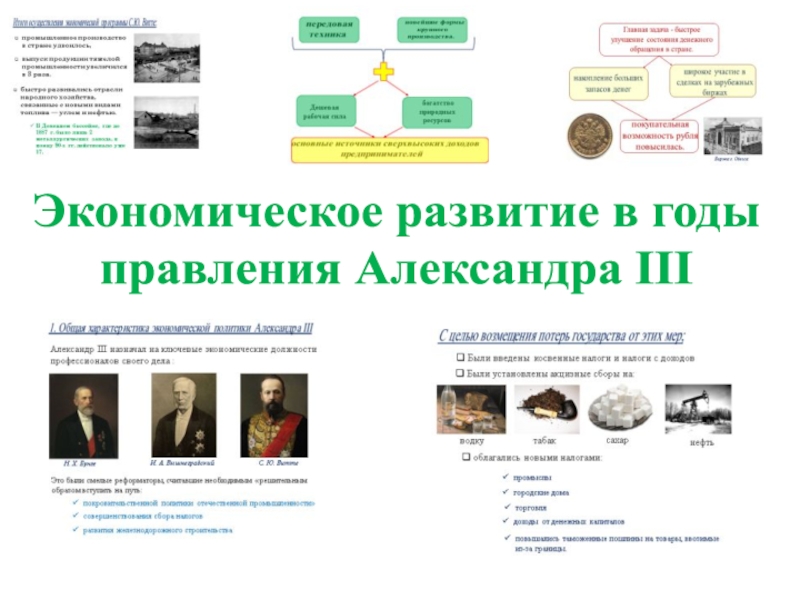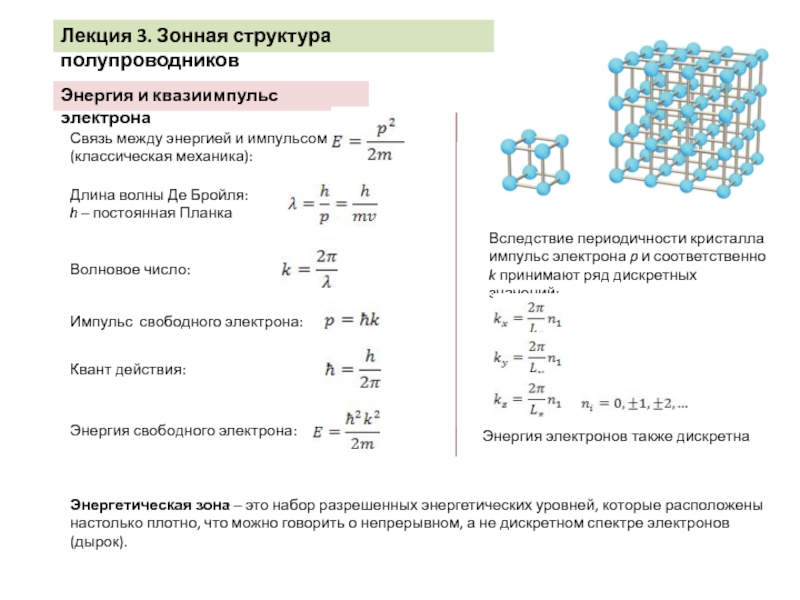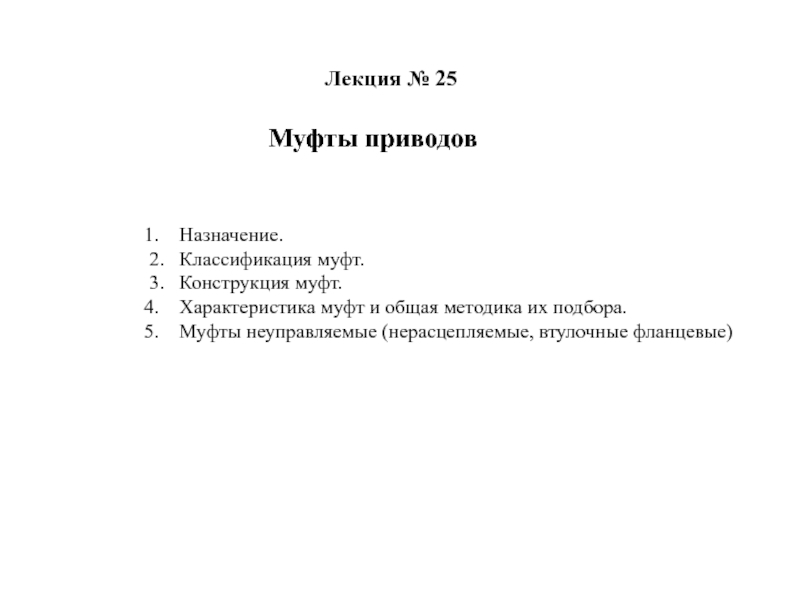Слайд 1Introduction to Contracts
Legal English
Слайд 2Contracts: An Overview
Contract formation: the process by which a
new contract comes into existence
Requirements for forming a contract
Agreement = offer + acceptance
Consideration
The persons who have formed a contract are the parties to the contract
Слайд 3Contracts: An Overview
The content of a contract is referred
to as its terms
Contractual terms can be classified as:
Rights
Obligations
Слайд 4Contracts: An Overview
After parties form a contract, they must
perform their obligations
If a party fully performs its obligations,
it is
Слайд 5Contracts: An Overview
After parties form a contract, they must
perform their obligations.
If a party fully performs its obligations,
it is discharged from the contract.
If a party does not fully perform its obligations, it has breached the contract.
Слайд 6Contracts: An Overview
If one party fails to perform: the injured
party may sue the breaching party for breach of contract
The injured party may request various remedies:
Damages
Specific performance
Injunction
Слайд 7Contract Formation
To form a contract, the parties must first
reach an agreement
To express that parties have reached agreement,
use the verb “to agree” + an infinitive describing what the parties have agreed to do
“Smith agreed to sell his house to Jones”
An agreement consists of two parts:
Offer
Acceptance
Слайд 8Contract Formation: Offer
An offer is a proposal to conclude a
contract
How to express that an offer has been made:
Two verbs express that an offer has been made:
“to offer”
“to make an offer”
Combine these verbs with an infinitive that describes what the offering party offered to do:
“Stephen offered to sell his car to Michael.”
“Stephen made an offer to buy Michael’s car.”
Once an offer has been made:
The person who made the offer is the Offeror
The person who received the offer is the Offeree
Слайд 9Contract Formation: Acceptance
When a valid offer is made, the Offeree
has the power to accept the offer
How to express that
an offer has been accepted:
Two verbs can express acceptance:
to accept
to assent (+ to)
Combine these verbs with the noun “offer,” and you may also briefly describe the offer that has been accepted:
“Smith accepted Jones’s offer to sell his car.”
“Smith assented to Jones’s offer to sell his car.”
Слайд 10Contract Formation: Acceptance
Rejection = the Offeree expresses that he will
not accept the offer
“Smith rejected Jones’s offer (to sell
his car).”
Counteroffer = the Offeree attempts to change the offer, even if he claims to accept
To express that a counteroffer has been made, apply the same rules used with offers to the verb “to counteroffer” or “to make a counteroffer:”
“Smith counteroffered (to buy Jones’s car) for $100 less.”
“Smith made a counteroffer (to buy Jones’s car) for $100 less.”
Once the Offeree has accepted an offer, the parties have reached agreement
Слайд 11Contract Formation: Acceptance
Rejection = the Offeree expresses that he will
not accept the offer
“Smith rejected Jones’s offer (to sell
his car).”
Counteroffer = the Offeree attempts to change the offer, even if he claims to accept
To express that a counteroffer has been made, apply the same rules used with offers to the verb “to counteroffer” or “to make a counteroffer:”
“Smith counteroffered (to buy Jones’s car) for $100 less.”
“Smith made a counteroffer (to buy Jones’s car) for $100 less.”
Once the Offeree has accepted an offer, the parties have reached agreement
Слайд 12Contract Formation: Consideration
A valid contract requires both agreement and consideration
Consideration = something of value
In common law jurisdictions, we
say that each party must “offer some consideration” to the other party
How to express that consideration is present
There is NO verb form of the legal term “consideration”
“The contract/agreement is supported by consideration.”
“The parties reached an agreement and consideration was present.”
Слайд 13Contract Formation
When both agreement and consideration are present, the parties
have formed a contract
Verbs that express a contract has been
formed:
to form: “The parties have formed a contract.”
to exist: “A valid contract exists between the parties.”
to enter + into: “The parties have entered into a valid contract.”
to commit oneself + to: “The parties have committed themselves to construct a house.”
to agree: “The parties agreed to construct a house.”
Слайд 14Contract Formation
Once a valid contract has been formed, it binds
the parties
The parties must perform their obligations under the
contract
If one party does not perform its obligations, the other party may enforce the contract in court
How the consequences of contract formation are expressed:
“The parties formed a valid, binding contract.”
“The parties have entered into a valid and enforceable contract.”
